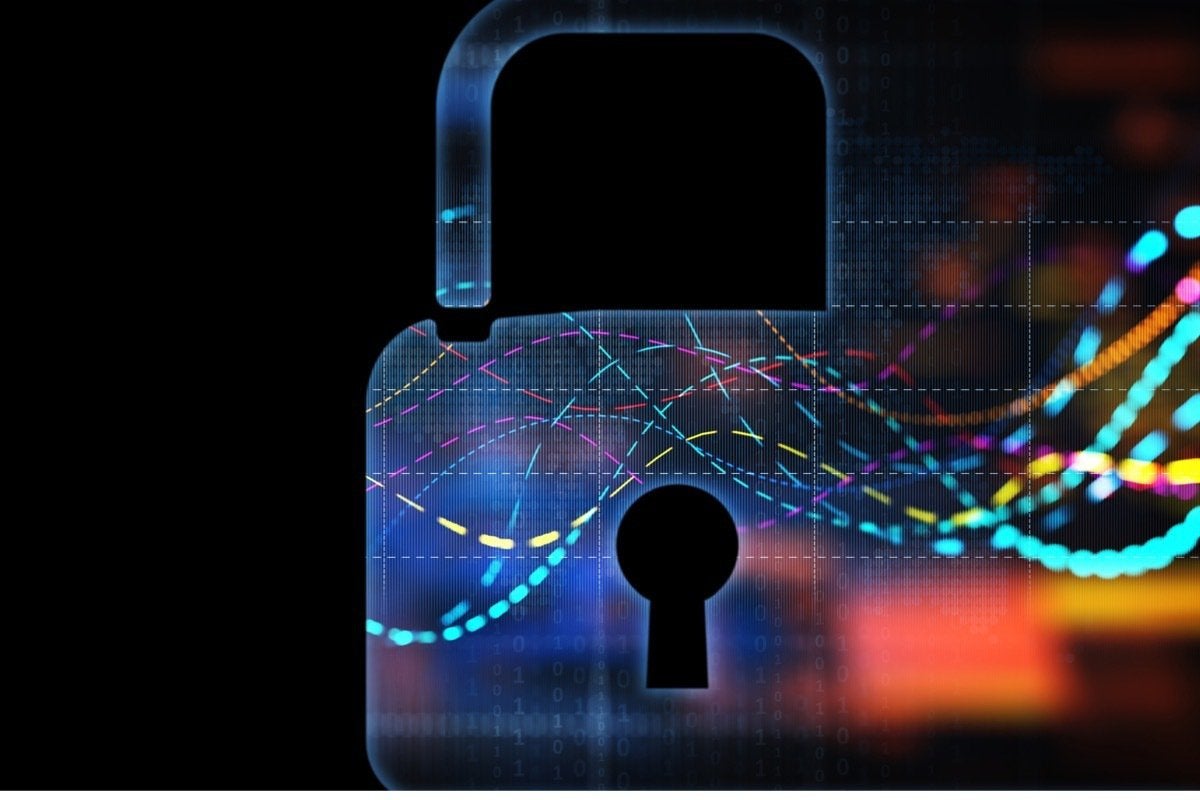Exploring the realm of digital security within interior spaces unveils a world where technology not only safeguards but also enhances the intrinsic value of our surroundings. Dive into this enlightening discussion that delves into the innovative ways digital security transforms interior spaces.
Digital security measures have become a pivotal aspect of modern interior design, revolutionizing how we perceive and interact with our living and working environments.
Importance of Digital Security in Interior Spaces

Ensuring digital security within interior spaces is crucial for enhancing the overall value of the environment. By implementing robust digital security measures, spaces become more attractive, functional, and secure for occupants.
Protection of Sensitive Information and Assets
Digital security plays a vital role in safeguarding sensitive information and valuable assets within interior spaces. From confidential documents to expensive equipment, these assets need to be protected from unauthorized access or theft.
- Access Control Systems: Utilizing technologies like keycards, biometric scanners, or PIN codes to restrict access to certain areas, ensuring only authorized personnel can enter.
- Video Surveillance: Installing security cameras to monitor and record activities within the space, acting as a deterrent for potential intruders and providing valuable evidence in case of incidents.
Creating a Safe and Secure Environment
Digital security systems contribute significantly to creating a safe and secure environment for occupants within interior spaces. This sense of security enhances productivity, peace of mind, and overall well-being.
- Intrusion Detection Systems: Alerting occupants or security personnel of any unauthorized entry or suspicious activity, ensuring a prompt response to potential threats.
- Alarm Systems: Notifying individuals in case of emergencies such as fires, floods, or break-ins, enabling quick evacuation or appropriate action to mitigate risks.
Integration of Digital Security Systems

Digital security systems are an essential component of modern interior spaces, providing enhanced safety and peace of mind. Integrating these systems seamlessly into interior design not only boosts security but also adds value to the overall aesthetic and functionality of the space.
Benefits of Integrating Digital Security Systems with Other Smart Technologies
Integrating digital security systems with other smart technologies, such as smart lighting, smart locks, and surveillance cameras, offers a more comprehensive approach to security. This interconnected network allows for real-time monitoring, remote access, and automated responses, enhancing the overall efficiency and effectiveness of the security measures in place.
- Improved Monitoring: By integrating digital security systems with smart technologies, users can monitor their interior spaces in real-time through connected devices like smartphones or tablets.
- Enhanced Automation: Automation features allow for seamless control of security settings, such as arming/disarming alarms, locking/unlocking doors, and adjusting surveillance camera angles.
- Increased Convenience: The integration of digital security systems with smart technologies simplifies the management of security protocols and provides users with convenient access to security controls.
Types of Digital Security Systems Suitable for Various Interior Design Styles
Different types of digital security systems are available to suit various interior design styles, ranging from discreet and minimalist to bold and high-tech. It is essential to select a system that not only provides the necessary security features but also complements the overall aesthetics of the space.
For a sleek and modern interior design, consider integrated security systems with minimalistic controls and sleek finishes.
For a more traditional or classic interior design, opt for digital security systems that mimic traditional hardware finishes or blend seamlessly with classic decor elements.
Successful Integration of Digital Security Systems in Commercial and Residential Spaces
Successful examples of integrating digital security systems in interior spaces can be seen in both commercial and residential settings. From high-end office buildings with sophisticated access control systems to smart homes equipped with integrated security cameras and sensors, the seamless integration of digital security systems has become a standard in modern interior design.
- Commercial Spaces: Many businesses have embraced the integration of digital security systems to protect their assets, employees, and customers. Access control systems, surveillance cameras, and alarm systems are commonly integrated into commercial interior spaces to ensure comprehensive security measures.
- Residential Spaces: Homeowners are increasingly investing in digital security systems to safeguard their homes and loved ones. From smart doorbell cameras to whole-house security systems, the integration of digital security technologies has become a priority for residential interior spaces.
Enhancing Aesthetics with Digital Security Features
Incorporating digital security features into interior spaces is essential for both functionality and aesthetics
Design Considerations for Integrating Digital Security Elements
When designing interior spaces with digital security features, it is crucial to consider the following:
- Choose sleek and modern designs for security cameras and sensors to blend seamlessly with the existing decor.
- Opt for customizable finishes and colors to match the overall color scheme of the space.
- Position security devices strategically to ensure they are discreet yet effective in monitoring the area.
- Work with interior designers and security experts to create a cohesive design that prioritizes both aesthetics and security.
Creative Ideas for Camouflaging Digital Security Devices
To seamlessly blend digital security devices with interior decor, consider the following creative ideas:
- Camouflage security cameras within decorative elements such as wall art or potted plants.
- Use smart home technology to integrate security features into existing furniture or lighting fixtures.
- Opt for hidden security panels that mimic the appearance of regular wall switches or outlets.
- Incorporate biometric security systems into stylish door handles or locks for a seamless look.
Impact of Aesthetically Pleasing Digital Security Solutions
Aesthetically pleasing digital security solutions not only enhance the visual appeal of interior spaces but also increase their overall value. By seamlessly integrating security features into the design, you can create a harmonious and secure environment that adds to the desirability and market value of the space.
Future Trends in Digital Security for Interior Spaces
The future of digital security in interior spaces is continuously evolving with the emergence of innovative technologies. These advancements are not only enhancing the safety and security of interior environments but also reshaping the way spaces are designed and utilized.
Advancements in Biometric Security Systems
Biometric security systems, such as fingerprint scanners and facial recognition technology, are becoming more prevalent in interior spaces. These systems provide a high level of security by accurately verifying the identity of individuals entering a space. The integration of biometric security features not only enhances safety but also adds a touch of sophistication to interior design.
Internet of Things (IoT) Integration
The integration of IoT devices is revolutionizing digital security in interior spaces. Smart sensors, cameras, and connected devices allow for real-time monitoring and control of security systems. This interconnected network enhances the overall security of interior spaces while providing valuable data insights for optimizing space utilization and efficiency.
Artificial Intelligence (AI) for Predictive Security
AI-powered security systems are increasingly being used to predict and prevent security breaches in interior spaces. Machine learning algorithms can analyze patterns and anomalies in data to identify potential threats before they occur. This proactive approach to security not only enhances safety but also improves the overall user experience within interior environments.
Enhanced Integration of Security with Smart Home Systems
The future of digital security in interior spaces lies in the seamless integration of security systems with smart home technologies. From voice-controlled security systems to automated lockdown features, the convergence of digital security with smart home systems offers a holistic approach to safety and convenience for occupants.
This integration not only enhances security but also elevates the overall functionality and comfort of interior spaces.
Concluding Remarks

In conclusion, the integration of digital security features not only elevates the safety and functionality of interior spaces but also adds a layer of sophistication and value that resonates with the evolving needs of contemporary living. As we look ahead, the future of interior design is intricately intertwined with the evolution of digital security, promising a harmonious blend of aesthetics and technological advancements.
FAQ Guide
How does digital security enhance the value of interior spaces?
Digital security ensures the protection of sensitive information and assets, creating a safe environment that adds value to the overall space.
What are some examples of digital security technologies used in interior spaces?
Examples include smart locks, security cameras, access control systems, and biometric scanners.
Can digital security systems be seamlessly integrated into different interior design styles?
Yes, digital security systems can be tailored to complement various interior design styles, blending seamlessly with the aesthetic appeal of the space.







